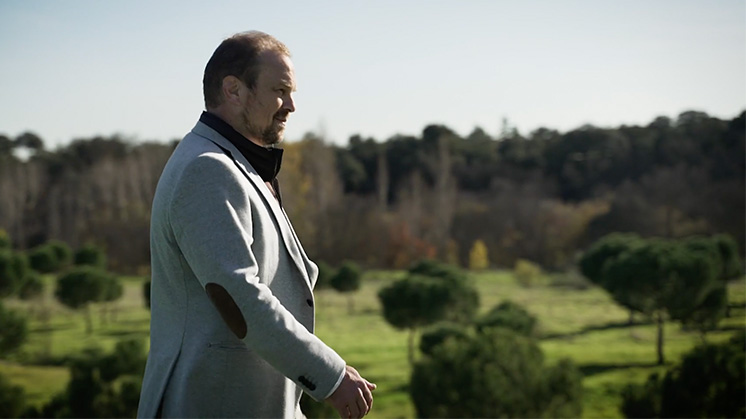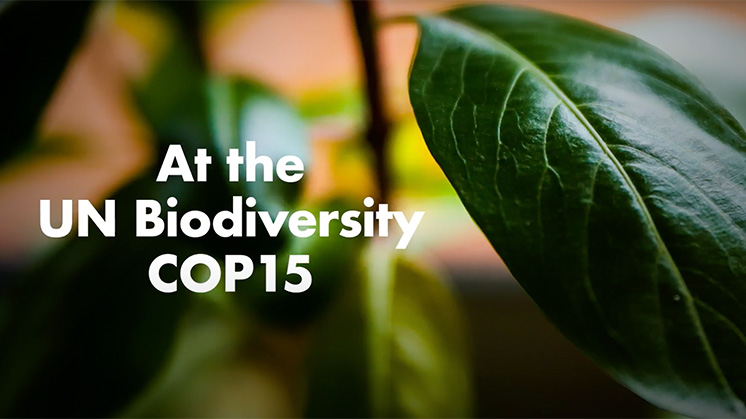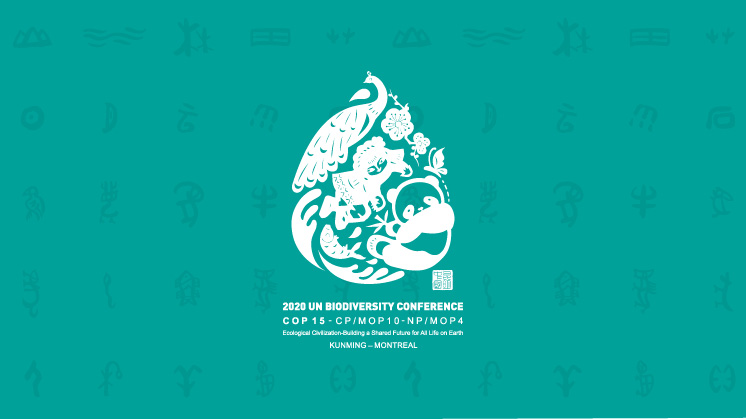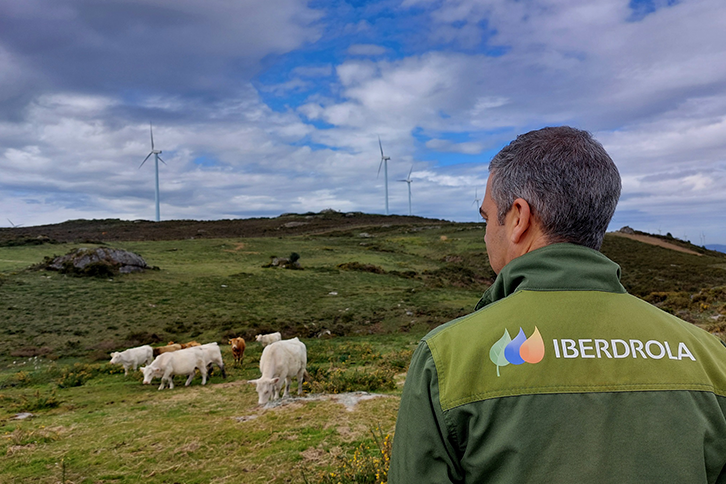COP 15: Biodiversity Summit 2022
A global meeting for biodiversity
The second part of the United Nations Conference on Biodiversity 2022, better known as COP 15, was held in Montreal, Canada, from 7-19 December after a virtual prelude in 2021. The summit, which brought together governments and the global private sector, concluded with the adoption of a new global framework for biodiversity post-2020.
Despite efforts to protect the Earth, biodiversity is deteriorating across the globe and this degradation is expected to worsen unless urgent and targeted action is taken. To this end, the UN Conference on Biodiversity (COP 15), which took place from 7-19 December, brought together governments from around the world to agree on global actions and initiatives focused on protecting and restoring nature. This meeting was an important turning point as it was the first in this series of summits involving the global private sector.
China officialy chaired the summit, which was organised in the wake of the Convention on Biological Diversity and divided into two parts. After several postponements due to the pandemic, the first instalment of COP 15 was held virtually from 11 to 15 October 2021 with the official venue in the Chinese city of Kunming.
During that first meeting, the Kunming Declaration was approved by which the participating governments assumed various commitments such as "strengthening national environmental laws and their enforcement to protect biodiversity" or "the reform or elimination of subsidies that are harmful to biodiversity". China also committed to the creation of a 1.5-billion-yuan (about 200 million euros) fund for biodiversity conservation in developing countries.
The second session of the summit was held in Montreal (Canada). Inger Andersen, UN Under-Secretary-General and Executive Director of the United Nations Environment Programme (UNEP), portrayed its relevance: "I invite you to let this COP 15 be remembered as the moment when we once and for all set our societies and economies on the path to revitalising the biodiversity on which we humans depend so much.

The keys to COP 15 according to Emilio Tejedor, head of environment and quality at Iberdrola.
A global framework for action
UN Secretary-General António Guterres stressed the urgent need for action in his opening speech at the conference. "Today we are not in harmony with nature, on the contrary, we are playing a very different tune, a cacophony of chaos played with instruments of destruction," said Guterres. The UN chief went so far as to describe humanity as "a weapon of mass extinction" that "treats nature like a toilet".
Guterres outlined the measures that need to be taken to save nature in three main areas:
- The implementation of national plans that divert subsidies and tax breaks away from activities that contribute to the destruction of nature towards green solutions such as renewable energy or plastic reduction.
- A shift of the food and agricultural industry towards sustainable production.
- Enhanced financial support from countries in the Global South.
COP 15 became a historic gathering, convening governments and businesses from around the globe to establish a new global deal. The UN negotiations have concluded with the adoption of the post-2020 Global Biodiversity Framework, which is intended to be the most ambitious global plan ever developed for this environmental cause. The agreement came after a delay due to differences over financing made it difficult to reach consensus at COP 15.
The first draft of this document was presented in July 2021 and reached its goal after months of work by different international actors. The draft text is structured around four major goals and develops 23 concrete targets for 2030, among which the UN highlights:
- Conserve at least 30 % of the world's land, marine and coastal areas.
- Restore at least 20 % of each of the degraded freshwater, marine and terrestrial ecosystems, with special attention to priority ecosystems.
- Halve the rate of introduction of other known or potential invasive species.
- Reduce by at least half the nutrients lost to the environment and by at least two thirds the chemicals, in particular pesticides, harmful to biodiversity. Eliminate the dumping of plastic waste.
- Minimise the impact of climate change on biodiversity, contribute to mitigation, adaptation and resilience through nature-based solutions and ecosystem-based approaches.
- A $200 billion increase in international financial flows from all sources to developing countries.
The commitments agreed at COP 15 on this document guide global actions and initiatives to ensure that the shared desire to live in harmony with nature is achieved by 2050. This has addressed the global loss of biodiversity, the need for increased funding to achieve this and the need to reduce pollution from agriculture and plastics.
The treaty calls for "urgent action" to "halt the human-induced extinction of threatened species". By 2050, "the rate of extinction" will be reduced tenfold.
In addition, the Conference discussed the implementation of the protocols to the Convention on Biological Diversity (CBD) that address the fair and equitable sharing of benefits from the use of biodiversity, and the safe transport, handling and labelling of living modified organisms.

Business for Nature's Make it Mandadory campaign at COP 15.
IBERDROLA AT COP15ROLA EN LA COP15
The Iberdrola group, as a world leader in the fight against climate change, played a leading role and actively participated in COP 15, demonstrating its commitment to a sustainable energy model that generates opportunities. The company attended under the umbrella of Business for Nature, the global coalition that brings together influential organisations and companies working to reverse the loss of nature and restore the planet's essential ecosystems.
Iberdrola has set itself the goal of achieving a net positive impact on the ecosystems and species where it operates by 2030. The new Biodiversity Plan [PDF] was presented by Emilio Tejedor, the company's environmental director, at the World Biodiversity Summit. This new plan establishes the necessary mechanisms to ensure that the Group's activity contributes, by the end of this decade, to generating better environmental conditions than those that existed previously.

"This plan complements Iberdrola's Climate Action and Circular Economy plans, which address decarbonisation and the sustainable use of resources for the comprehensive protection of the nature that surrounds us and on which we vitally depend."
Emilio Tejedor
Head of Environment and Quality at Iberdrola
All the information about
COP 15
What is the UN Conference on Biodiversity?
The UN Conference on Biodiversity is a high-level conference organised by the United Nations that brings together states, the private sector, organisations and non-state actors. It is based on the UN Convention on Biological Diversity, a 1992 international treaty that aims to conserve biological diversity and promote its sustainability, as well as to enhance the fair and equitable sharing of the benefits arising from the use of genetic resources. The summit is held every two years.
Who participates in the COP on Biodiversity?
Parties are the member states of the Convention on Biological Diversity and the European Union -currently around 200 countries- participate through their heads of state or government or, on their behalf, ministers. In addition to Parties, business representatives were able to attend COP 15 for the first time. International organisations, interest groups or associations may also attend.
What is the objective of the COP on Biodiversity?
The COP on Biodiversity steers, oversees and decides on the process of implementation and future development of the Convention on Biological Diversity through the analysis and discussion of the agenda items. The aim of this summit is to achieve a sustainable, respectful and resilient future for biodiversity.
Why are there different COPs?
The United Nations Framework Convention on Climate Change (UNFCCC) was born in 1992 at the Earth Summit in Rio de Janeiro. At this important summit on sustainable development, three natural processes were identified as being at high risk: desertification, biodiversity loss and climate change.
Since then, all three conventions have existed, although the best known is the one on climate change, both because of the scale of the problem it represents and because of the need to accelerate action by governments and companies to address it.
Thus, until now, the Climate Change Conference and the Biodiversity Conference have met independently of each other. However, more and more actors and participants insist on the need to look for cross-cutting solutions to climate change and biodiversity.
How many COPs have been held?
Since 1994, 15 COPs have been held. The first one took place in Nassau (Bahamas) and since then they have been held in different cities in Europe, America, Africa and Asia.
Where and when was COP 15 held?
The first part of COP 15 was held in the Chinese city of Kunming while the second part was hosted by Montreal (Canada) between 7 and 19 December 2022. The date and location were postponed several times due to the pandemic.
Who chaired COP 15?
China held the presidency of COP 15 despite the change of location of the second part of the summit to Canada.
Why was COP 15 important?
COP 15 took on great relevance as it is a multilateral meeting of governments and companies from all over the planet to approve the post-2020 Global Biodiversity Framework, the most ambitious plan promoted for biodiversity so far. After months of negotiations, this plan set out the targets to be achieved in the coming decades to achieve global sustainability.






